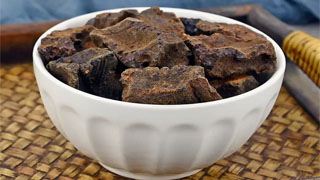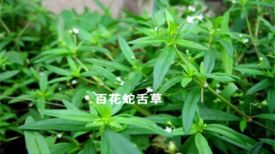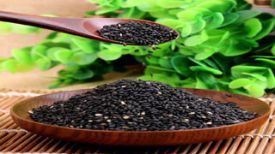1. Nicknames: Childhood Tea, Xixie, Childhood Tea Cream, Black Childhood Tea.

Deciduous trees. Height: 6-13 meters. The bark is brown and appears as thin strips, peeled off without detachment. Two even feathered compound leaves, alternate, 4-20 centimeters long, with gray pubescence on the leaf axis. 10-20 pairs of attached feathers, 2-4 centimeters long, each with 20-50 pairs of small leaves. The small leaves are linear, 3-6 millimeters long, and sparsely hairy on both sides. Racemes axillary, calyx tube shaped, apex 5-lobed, sparsely hairy, petals 5, yellow or white, 2-3 times longer than calyx. Most stamens extend beyond the corolla; One pistil, ovary superior, ovate in shape. The pods are flat and thin, purple brown, and glossy. The flowering period is from August to September, and the fruiting period is from October to November.
3. Origin distribution
It is mostly found near villages or roadsides, or for cultivation. Mainly distributed in the Xishuangbanna region of Yunnan, it is now cultivated in Guangdong, Guangxi, and Fujian.
4. Harvesting and processing
Generally, from December to March of the following year, the branches and trunks of catechu are collected, the outer skin is peeled off, the heartwood is chopped into pieces, boiled in water, filtered, and the filtrate is concentrated into a syrup, cooled slightly, poured into a specially designed model, and dried in the shade.
5. Characteristics of medicinal herbs
Square or irregular block shaped, with varying sizes. The surface is brown or black brown, smooth and slightly glossy. Hard, fragile, uneven cross-section, glossy, with fine pores, sticky when exposed to moisture. Odorless, astringent and bitter in taste, with a slight sweetness.
6. Nature, taste, and meridian tropism
Mildly cold in nature, bitter and astringent in taste. Return to the lung meridian and heart meridian.
7. Effect and function
Moisturizing, promoting muscle growth, controlling sores, and stopping bleeding. Convergent hemostatic drugs that belong to the subcategory of hemostatic drugs.
8. Clinical applications
Dosage 1-3 grams, pan fry, add more pills and powder; Apply an appropriate amount externally, grind and sprinkle or adjust. Used to treat ulcers, eczema, oral ulcers, falls and falls, and external bleeding.
9. Pharmacological research
It has functions of protecting the liver and gallbladder, regulating the immune system, resisting pathogenic microorganisms, lowering blood sugar, inhibiting gastrointestinal motility, and resisting diarrhea; Anti platelet aggregation and anti thrombosis, reducing serum cholesterol content, lowering tissue oxygen consumption, especially myocardial oxygen consumption, lowering blood pressure, and regulating cardiovascular system function; Tea has certain analgesic, anti radiation, elevated white blood cells, and anti-tumor effects, and can inhibit tumor cell adhesion with fibrinogen, thereby preventing tumor cell spread. Pharmacological experiments have shown that aqueous solutions can inhibit the peristalsis of the duodenum and small intestine in rabbits, promote the retrograde peristalsis of the cecum, and have an antidiarrheal effect. Water decoction has inhibitory effects on Staphylococcus aureus, Diphtheria, Proteus, Shigella flexneri, and Salmonella typhi, as well as common pathogenic skin fungi.
10. Chemical composition
Contains components such as catechins, epicatechin, catechin tannins, mucin, fatty oil, tree gum, wax, catechin tannic acid, catechin, dihydrokaempferol, D-alpha catechin, dihydrokaempferol, dimeric cyanidin, L-alpha catechin, racemic catechin, and catechin.
11. Taboos for use
The cold and dampness syndrome is prohibited.
12. Compatibility prescription
① To treat chancre and oral ulcers: children's tea, borax and other ingredients are used as the final application. (Compendium of Principles)
② Treatment of horse tooth chancre: divided into child tea, realgar, and fritillaria. For the end, rinse with rice and swish. (The Compendium of Principles cites the Empirical Formula of Jide Hall)
③ To treat nasal abyss and flowing water: Blow it with the end of children's tea. (The Compendium cites "Bencao Quandu")
④ Treatment for chancre ulcers: 3g of baby tea, 0.3g of pearl, and 0.15g of sliced brain. For the final application. (The Compendium of Materia Medica cites "Compilation of Essential Prescriptions")
⑤ Treating hemorrhoids: Mix equal amounts of light powder, borneol, and baby tea with 10 times the amount of sesame oil to form an emulsion. Bottle for later use, use a cotton swab dipped in medication, and place it in the anal canal. [Heilongjiang Medicine 1972, (2): Light ice emulsion]
⑥ Cough treatment: 60g of catechu, 12g of asarum, and 1 pig bile. The first two medicines were co researched and the bile was extracted and refined. The three medicines were combined into pills, each weighing 3 grams. Take one pill four times a day, on an empty stomach. (Selected Materials for the National Exhibition of Traditional Chinese Medicine and New Medical Therapy)
⑦ Treatment for skin eczema, ulcers, and excessive secretions: 9g of catechu, 6g of light powder, 0.9g of borneol, and 9g of dragon bone. Apply the final water adjustment externally. (Clinical Application of Traditional Chinese Medicine, Erqing Powder)


